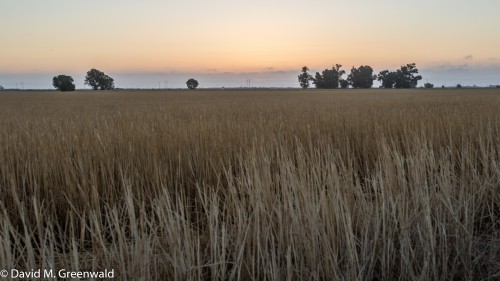
Davis is gearing up for a potential relatively modest revision to its general plan. The plan on how to approach the Davis General Plan has already generated some interesting discussion and debate in the community. We would expect, at least for the engaged sector of the population, this to be a lively discussion – to say the least.
Meanwhile, Woodland is poised for a far more pervasive change to their general plan, but they are guarding against complacency.
The editorial from last week by the Daily Democrat shows a huge difference between the communities.
“For most Woodland residents, mention the words ‘General Plan’ and you’ll get a response that ranges from glazed eyes to wide yawns. Others, however, see dollar signs through the prospect of new housing and businesses,” the editorial begins.
That is certainly not the reaction of the engaged Davis populace, many of whom worried that an outreach planned for August would catch people on vacation rather than in town and paying attention to city politics.
The editorial in Woodland goes on the explain what a general plan is: “Every city in California is required to have a General Plan for some pretty simple reasons. Wanton development in the past led to what some called ‘leap-frogging,’ where entire communities were constructed adjacent to — but not a part of — big cities.”
It continues, “There were a lot of negative things which happened as a result of these developments, but one of the major problems was that the residents of larger, surrounding cities, were forced to pay to bring services to the smaller ‘satellite’ cities. Another problem was that these new ‘upstart communities’ didn’t need to conform to the zoning rules of their nearby brethren.
“So, over time, laws were put in place to make sure there was more regulated (a word which many land developers despise) growth. The primary guidebook under which these laws are administered is the General Plan.”
The editorial notes, “The documents look decades into the future — in Woodland’s case, to the year 2035 — spelling out where new housing can be situated, how the community should construct itself, the number of new parks and playgrounds, along with the locations of all the sewer, water and electrical systems to serve the area.
“They are important. And Woodland residents should have a say in developing this document. After all, future Woodland will be where you want your kids to live. You should want the city to look its best, to grow smartly, not randomly,” it continues. “But be advised, reading the General Plan is not for the faint-hearted. It’s a hefty document, which is full of fascinating details and historical information, but almost as dry as dirt during our California drought. It’s not easy reading, but it is fascinating.
“From what little we’ve read, there’s not much to disagree with. But we’ve only gotten through a small portion and suffice it to say that the principles are lofty but the implementation a bit vague,” the editorial notes, in language that would never be uttered here.
“Sadly, we don’t think many people will take the time to either read or understand the plan. Even major developers — who want to build hundreds of houses on hundreds of acres — won’t look all that closely at all portions. They’ll have their attorneys do that. Then those attorneys provide written comments on what is wrong with the plan from their perspective. That’s OK. They deserve a say. But you may not share their opinions. And the only way to make your opinions known is to turn out to functions like the Open House. People interested in downtown should attend. So, too, should those who want to understand why some types of architecture is favored.
“The plan being put before the public is almost three years in the making. It wasn’t meant to be so inclusive, but the more city officials dug into the document, the more they wanted to make it something to be proud of — or at least reflect the community at large. Whether they are successful depends entirely on the level of citizen participation. You may not like every single element — and there are nine primary sections — but you should take time to understand the ‘vision’ being laid out, those areas targeted for new housing, apartments, roads, new schools and recreation areas.”
The editorial concludes, “Your eyes may glaze over while trying to understand subjects discussed, but stick with it. It’s your town. It’s your future.”
We can, of course, debate which approach is better. You can argue that Woodland is getting stuff done while Davis argues over the rules of engagement. You can note that Woodland council meetings are over before they start, whereas Davis’ are all-night engagements, not for the faint of heart.
We can debate over which approach is best, but I wonder if it would be a one-sided argument.
—David M. Greenwald reporting






So one sided that no one has even seen fit to comment on the article.